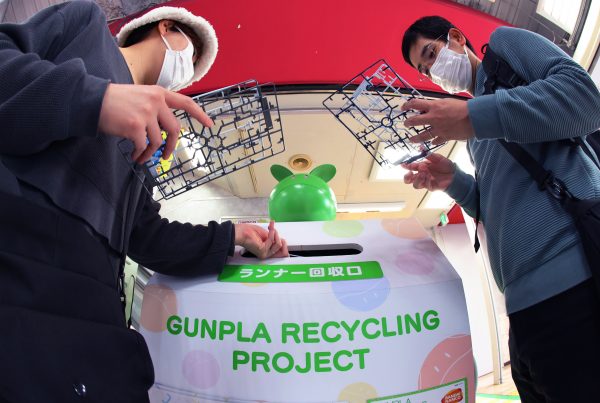They could well turn to Japan for inspiration on how to better manage plastic waste, particularly the expansion of waste collection services to rural areas where there is a higher proportion of mismanaged waste. For example, a 2020 report published by the World Economic Forum estimated the fate of Indonesia’s plastic waste across four main categories — megacities, medium-sized cities and rural and remote areas. Medium-sized cities and rural areas account for around 72 per cent of mismanaged waste. While megacities only accounted for around 10 per cent of the total leakage of plastics, rural areas accounted for 49 per cent of the leakage into the sea, lakes and rivers.
Waste collection services are provided to almost all households in Japan, but in 1961 the percentage of waste collection coverage was only 46.6 per cent. By the end of the 1970s, the percentage of waste collection coverage had reached 92.6 per cent. From the 1960s, the central government increased subsidies for local governments to invest in methods of waste disposal such as waste incineration plants, waste-to-energy plants and landfills.
The Japanese government also promoted inter-municipal cooperation on waste management because waste-to-energy plants and landfills achieve economies of scale. Some 537 inter-municipal associations for waste management were established between 1961 and 1979.
A few cases of similar regional waste management approaches do exist in developing Asian countries, such as India, Thailand and the Philippines. But even in these countries, regional waste management schemes are limited. This is due to a lack of national policies and funding mechanisms to expand waste management facilities to smaller cities and rural areas.
In the latter half of the 1980s, household and industrial waste generation in Japan increased 21 per cent and 26 per cent respectively, due to economic growth and a massive uptick in the usage of plastics. Japan faced a shortage of landfill sites and an increase in illegal dumping of industrial waste around 1990, prompting the Japanese government to promote recycling. In 1991, the Law for the Promotion of Utilization of Recycled Resources enabled the government to require industries to implement designs for recycling and labelling waste for separate collection.
Extended producer responsibility (EPR) was tried for the first time in Japan with the 1995 Act on the Promotion of Sorted Collection and Recycling of Containers and Packaging. The Act required producers who use containers and packaging to pay a recycling fee to the Japan Containers and Packaging Recycling Association, a government-designated organisation responsible for overseeing recycling services. The Act also requires consumers to manage the return of material for recycling and allows municipalities and producers to organise their own recycling programs.
For example, a producer of polystyrene trays for sashimi and sushi has its own recycling program. Recycling bins for used polystyrene trays are collected at supermarkets and stores. Consumers wash the trays at home and return trays to designated bins when shopping. The trays are then collected when trucks deliver new trays to shops. The collected waste trays are recycled into new polystyrene trays, but the surfaces of the tray are coated with virgin plastic.
EPR was applied to glass and polyethylene terephthalate (PET) bottles in 1997. In 2000, it was also applied to paper and plastic containers. Now 87 per cent of plastic waste is recycled or undergoes thermal recovery in Japan.
It is critical to identify the sources and types of plastics that are leaking into the environment and to apply appropriate countermeasures. Attention is now being paid to other sources of plastic waste in Japan. The Act on the Promotion of Resource Circulation for Plastics that came into force in 2022 promotes recycling of plastic waste other than packaging and containers, such as that of plastic toys and clothes hangers.
In fiscal year 2020, a microplastics survey conducted in rivers and lakes by Japanese start-up Pirika and its partner organisations — including 20 local governments and two universities — found that artificial turf and capsules of slow-release fertiliser were the dominant microplastics in Japan at 23.4 per cent and 15 per cent, respectively. In response, the National Federation of Agricultural Cooperative Associations declared that slow-release fertiliser capsules made from non-biodegradable plastics would be replaced with biodegradable plastic capsules.
The 2022 Act on Promotion of Resource Circulation for Plastics promotes the recycling of various plastic products by regulating the free-of-charge supply of plastic cutlery, stirrers and straws by restaurants and retailers. The law also covers the provision of toothbrushes, razors and other items by hotels, as well as hangers and bags by dry cleaners.
The Japanese government is now supporting Southeast Asian countries with their plastic pollution by organising training courses through the Japan International Cooperation Agency. And the Japanese Ministry of Environment supported the establishment of the Regional Knowledge Centre for Marine Plastic Debris under the Economic Research Institute for ASEAN and East Asia in 2019, which disseminates responsible environmental practices in the region through online and in-person public outreach. The ASEAN–Japan Centre has also held marine plastic debris awareness programs in several schools across Japan and some ASEAN countries.
Reducing plastics through recycling and replacement with other materials is critical, but it is difficult to do so in a short period of time, particularly in developing countries. Effective waste management is dependent on enhancing capacity in the region, minimising the use of plastics and implementing and promoting recycling through EPR schemes. Japan’s experience provides a successful model which can be the basis of similar initiatives to deal with this problem in Southeast Asia.
Michikazu Kojima is Chief Senior Researcher at the Institute of Developing Economies, Japan External Trade Organization (IDE-JETRO), and Senior Advisor to the President on Environmental Issues at the Economic Research Institute for ASEAN and East Asia (ERIA).


Japan’s persistent nuclear wastewater discharges have already had effects on the sea. Since, well before the official discharge date, black rodfish were discovered in the waters off Fukushima with serious excess radioactive material, suggesting how species of marine life might evolve after radioactive exposure.